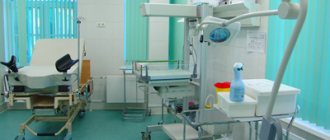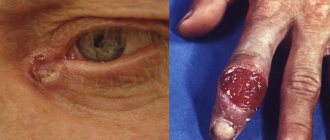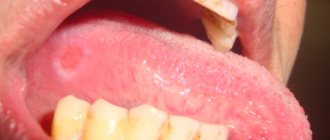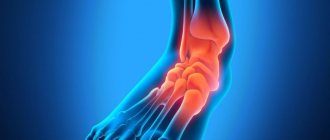- When they talk about diarrhea
- Why are young children prone to diarrhea?
- Types of diarrhea
- The main causes of diarrhea in children
- How does it manifest itself?
- How to properly treat diarrhea in children
- When is emergency medical consultation necessary?
Diarrhea is one of the most common health problems in children of all ages, and most often parents encounter it in the first years of a child’s life. In medicine, the term “diarrhea” is used to refer to this condition. But this is not an independent pathology with a separate diagnosis, but the main symptom of many diseases. It is the development of diarrhea in a child that often becomes the most obvious and potentially dangerous manifestation of the disease, prompting parents to consult a pediatrician or a doctor of another specialty. And the younger the patient is, the more important the timely initiation of treatment and the correct selection of drugs are.
When they talk about diarrhea
Diarrhea is the name given to pathologically frequent, loose stools, and the presence of both signs is important for making a diagnosis. If the child already has an established defecation pattern (once every 1-2 days, with the release of formed stool), diagnosing diarrhea is not particularly difficult. The appearance of pasty, and especially liquid, discharge 3 or more times a day is an unambiguous sign of diarrhea, requiring clarification of the most likely cause and initiation of treatment.
If moderately severe diarrhea develops in an infant in the first six months of life, parents do not always recognize this disorder in a timely manner. Indeed, for children who are breastfed, it is normal to pass mushy stools up to 10 times a day. How to distinguish diarrhea in this case? The diagnostic criterion for diarrhea in infants is an increase in the number of bowel movements by 2 or more times.
How and when can you become infected?
Sources of rotavirus infection can be a sick child or an asymptomatic carrier. The virus is excreted from the body in the stool and gets onto household items, clothing and food with dirty hands.
Doctors often call rotavirus infection a “dirty hands” disease.
A healthy child can introduce the virus into the body first by touching things, and then by touching the face, and also by eating unwashed vegetables and fruits.
Rotavirus outbreaks typically occur in winter, early spring, or late fall because viruses persist in the environment longer at low temperatures. In summer, food poisoning occurs more often - the cause is usually bacterial contamination of food, and bacteria multiply better in the hot season.
Why are young children prone to diarrhea?
In children of the first years of life, intestinal disorders with a tendency to diarrhea occur more often than in older preschoolers, schoolchildren and adults. This is due to several factors:
- Functional immaturity of enzyme systems in children 1–2 years of age. Although they produce all the necessary digestive enzymes, their quantity and activity do not always correspond to the volume and composition of food. In addition, partial lactase deficiency is quite common in infants - a deficiency of the lactase enzyme, which is responsible for the breakdown of the milk sugar lactose. This pathology often develops after infectious diarrhea in a child, creating the preconditions for unstable stools with a tendency to diarrhea when eating dairy foods.
- Lack of maturity of the systems that regulate the functioning of the digestive tract, which predisposes to an imbalance in the motility of various parts of the intestine. Moreover, this is considered a variant of the age norm, and not a pathology requiring treatment.
- Insufficiently formed and not fully balanced composition of the intestinal flora. The intestines of a newly born child are sterile and, from the first hours of life, begin to gradually be populated by various microorganisms. Normal bacterial microflora helps break down certain nutrients, produces B vitamins, and generally contributes to the proper functioning of the entire gastrointestinal tract. But in children, a situation often occurs when opportunistic bacteria and fungi begin to multiply excessively in the intestinal lumen, which is called dysbiosis. And it is not only accompanied by intestinal disorders, but also increases the likelihood of developing infectious diarrhea in a child.
- Increased (compared to adults) absorption surface area in the intestine. Therefore, toxins supplied with food and produced by pathogenic bacteria are absorbed much faster and have a more pronounced negative effect on the functioning of the digestive tract.
As children grow, they become less prone to intestinal disorders, and diarrhea in a child 5 years of age and older is usually associated primarily with poisoning and intestinal infections.
Establishing diagnosis
The medical history focuses on the frequency and type of stool, and also relies on associated symptoms. The addition of temperature and vomiting indicates an infectious lesion of the gastrointestinal tract. The nature of the diet matters. Information about diarrhea, which began after the introduction of certain cereals (oats, wheat), indicates gluten enteropathy (celiac disease), information about a violation of the type of stool after including other products in the diet indicates food intolerance.
When examining the patient, the presence of signs of dehydration is taken into account, the general condition is assessed, and the abdomen is examined and palpated. Delay in physical development indicates more serious abnormalities in the body. In children with suspected cystic fibrosis, the condition of the internal organs is assessed.
Laboratory and instrumental research includes:
- determination of electrolyte levels during dehydration;
- determination of sodium and chlorine concentrations if cystic fibrosis is suspected;
- if an infectious process is suspected, examination for viruses, bacteria and parasites.
With celiac disease, an increased amount of specific antibodies is found in the blood. Diet changes can be used for both diagnosis and treatment.
Types of diarrhea
Clinical classification of diarrhea takes into account several signs:
- Duration of intestinal disorders. There are acute (up to 2 weeks), prolonged (over 14 days and up to 2-3 months) and chronic (over 3 months) diarrhea.
- Severity of diarrhea. It can be mild, moderate, severe, which is determined by the frequency and abundance of stool, the general condition of the sick child and the severity of additional symptoms.
- Causal factor. Diarrhea can be infectious or non-infectious.
Various factors can lead to thinning and frequent stools. But their action can be summarized into 5 (five) key pathogenetic mechanisms: secretory, osmolar, exudative, hyperkinetic, hypokinetic. The last two types are often combined when talking about the motor mechanism for the development of diarrhea.
| Mechanism of intestinal disorders | What is the reason | Type of diarrhea |
| Secretory type associated with hypersecretion of electrolytes and water into the intestinal lumen. | Disruption of the functioning of enterocytes (cells of the intestinal mucosa) under the influence of bacterial and other toxins, viruses, excess bile acids and some biologically active substances. | The discharge is copious, watery, painless (watery diarrhea). |
| Osmolar type, associated with the accumulation in the intestinal lumen of substances with increased osmolarity, which “attract” large amounts of water and electrolytes. | Impaired digestion and absorption of food, usually due to a lack of enzymes or their reduced activity. Less commonly, the cause of such diarrhea is the intake of substances with increased osmolarity (for example, lactulose). | The stool is copious, with a large amount of insufficiently digested food debris (polyfecal diarrhea). The severity of intestinal disorders depends on the amount and composition of food consumed, and fasting can completely eliminate diarrhea. |
| Exudative type, in which an increased release of water into the intestinal lumen is caused by the appearance of multiple erosive and ulcerative defects of the mucous membrane or an increase in lymph pressure. | Inflammation of the intestinal wall or its destruction under the influence of certain infectious agents. | The stool is liquid, of medium abundance, with the obligatory admixture of blood and mucus and painful defecation. |
| Hyperkinetic type, characterized by increased intestinal motility with accelerated evacuation of its contents | Violation of neurogenic regulation, increased amount of biologically active substances with a stimulating effect. | Stools are frequent, liquid, but not profuse, with unproductive urges and cramping pain |
| The hypokinetic type is the rarest in children. It is characterized by slow movement of food gruel through the intestines with the addition of hypersecretion of water. | Persistent disturbances in the nervous regulation of intestinal function due to severe systemic diseases (scleroderma, amyloidosis) or complicated diabetes mellitus. | The stool is moderately liquefied, viscous, stagnant, not abundant |
The main causes of diarrhea in children
All possible variants of diarrhea in children of different ages can be divided into infectious and non-infectious.
| Infectious diarrhea | Non-infectious diarrhea |
| Opportunistic bacterial flora (streptococci, staphylococci, E. coli and others). Excessive growth of their colonies is mainly associated with an imbalance of intestinal microflora (dysbacteriosis), including after taking antibiotics. | Enzyme deficiency, leading to incomplete digestion of nutrients with the accumulation of foods with increased osmolarity in the intestines. The following are of greatest importance in childhood: 1. Lactase deficiency; 2. Celiac disease; 3. Impaired digestion of fats with the formation of steatorrhea (fatty stool), which is associated with a reduced amount of lipase (an enzyme for the breakdown of fats) and disorders of bile secretion. This also includes the consequences of overeating, accompanied by a relative deficiency of normally secreted enzymes. |
| Pathogenic bacteria (Vibrio cholera, Salmonella, Escherichia, pathogenic forms of Staphylococcus, Clostridia, Yersinia, Campylobacter). Infants become infected with them from the carrier mother or sick adults, due to errors in care. In older children, the causes of infection are violations of personal hygiene rules, food poisoning, and epidemic outbreaks of intestinal infections in children's groups. There are also special forms of bacteria (tuberculosis bacillus). Fortunately, intestinal tuberculosis is rarely diagnosed today. | Failure of adaptation mechanisms with a sharp change in the usual diet, a rapid transition to another climatic zone. |
| Viruses: enterovirus, rotavirus and other infections. | Irritable bowel syndrome is a chronic disorder of the intestines of a functional nature. Its symptoms tend to recur and are not associated with any organic (structural defects) or infectious causes; deterioration of the condition is often associated with stressful situations and neuro-emotional overload. |
| Helminthic infestations with the reproduction of various parasitic worms (pinworms, roundworms, tapeworms, etc.) in the intestines. | |
| Protozoa (amoeba, lamblia). | Damage to the wall of the colon of non-infectious origin: Crohn's disease, ulcerative colitis, ischemic colitis (due to impaired blood supply to the intestine). |
| The presence of special tumors that produce biologically active substances with a stimulating effect (VIPoma, gastrinoma). They are rare causes of persistent diarrhea in children. | |
| Systemic diseases (amyloidosis, scleroderma). |
In children of older preschool and school age, predominantly infectious forms of diarrhea occur, as in adults. And in a newborn and a child 1–2 years old, diarrhea is more often of a non-infectious nature or develops against the background of dysbacteriosis.
Bibliography
- Features of the digestive system in children. Research methodology. Semiotics of lesions: a textbook for students / E. A. Tkachuk, N. N. Martynovich; Federal State Budgetary Educational Institution of Higher Education Institute of State Medical University of the Ministry of Health of Russia, Department of Pediatrics. – Irkutsk: IGMU, 2021. – 89 p.
- Pharmaceutical care for diarrhea. Textbook, ed. professors V.Kh.Fazylov / S.N.Egorova, T.A.Akhmetova, G.Kh.Murtazina, I.E.Kravchenko, L.N.Minapov. – Kazan, 2014. – 50 p.
- Belmer S., Gasilina T. DIARRHEA IN CHILDREN: MAIN CAUSES AND TREATMENT ROUTES. Issues of modern pediatrics. 2010;9(6):135-138.
- Pechkurov D.V., Tyazheva A.A. Chronic diarrhea in children: main causes and mechanisms, primary diagnosis, approaches to treatment. Issues of modern pediatrics. 2019; 18(6):416–423. doi: 10.15690/vsp.v18i6.2061
- Treatment of diarrhea. Training manual for doctors and other categories of senior health workers, WHO. 2006.
- Rotavirus infection. Federal Budgetary Healthcare Institution “Center for Hygienic Education of the Population” of the Federal Service for Surveillance in the Sphere of Consumer Rights Protection and Human Welfare (date of access: 10/12/2021) https://cgon.rospotrebnadzor.ru/content/63/124/
- Zakharova, I. N. Algorithm for differential diagnosis and treatment of infectious and non-infectious diarrhea in children / I. N. Zakharova, E. N. Andryukhina, Yu. A. Dmitrieva // Effective pharmacotherapy. – 2010. – No. 23. – P. 20-25.
- Kulichenko T.V. “Acute infectious diarrhea in children” Medical Council, No. 5-6, 2010, pp. 28-36.
- Bulatov V.P., Kamalova A.A. “Chronic diarrhea in children” Practical medicine, No. 7 (62), 2012, pp. 38-40.
- Kanner E.V., Gorelov A.V., Krutikhina S.B. ANTIBIOTIC ASSOCIATED DIARRHEA IN CHILDREN: A MODERN VIEW AT THE PROBLEM. Medical advice. 2017;(1):226-230.
- Subbotina Maria Dmitrievna, Kaplina Tatyana Anatolyevna Etiological structure and clinical and epidemiological features of infectious diarrhea in children // Pediatrician. 2021. No. S. URL: https://cyberleninka.ru/article/n/etiologicheskaya-struktura-i-kliniko-e... (date of access: 07/28/2021).
- Instructions for use of the drug Imodium® Express//Reg. number N016140/01//GRLS of the Russian Federation. – URL: https://grls.rosminzdrav.ru/Grls_View_v2.aspx?routingGuid=fdbc42af-4580-4ecd-93d8-2e9a965c707a&t= (access date: 10/12/2021)
- Double blind trial of loperamide for treating acute watery diarrhea in expatriates in Bangladesh.”Gut vol. 30.4 (1989): 492-
- Ardatskaya M.D., Belmer S.V., Dobritsa V.P., Zakharenko S.M., Lazebnik L.B., Minushkin O.N., Oreshko L.S., Sitkin S.I., Tkachenko E. .I., Suvorov A.N., Khavkin A.I., Shenderov B.A. “Intestinal dysbiosis (dysbacteriosis): current state of the problem, Comprehensive diagnosis and therapeutic correction” Experimental and Clinical Gastroenterology, No. 5 (117), 2015, pp. 13-50.
- Biopsychosocial Model of Irritable Bowel Syndrome. Yukari Tanaka, Motoyori Kanazawa, Shin Fukudo and Douglas A. J Neurogastroenterol Motil, Vol. 17 No. April 2, 2011, pp. 131-139
- Kovalev O. B., Molochkova O. V., Konyaev K. S., Pylaeva E. Yu., Anufrieva P. A., Kurmanova V. V., Korsunsky A. A., Kashchenko O. A., Galeeva E. V., Krylatova N.I. Etiology and clinical manifestations of acute intestinal infections in children, according to Moscow hospital data for 2016-2018 // Children's infections, T. 18, No. 2, 2021, pp. 54-57.
- Acute abdominal pain in children: educational method. allowance / Yu. K. Abaev. – Minsk: BSMU, 2007. – 96 s
- Infectious diarrhea: a problem-oriented approach in pediatrics / Children's doctor, 2010, No. 3, pp. 5-10.
- Abdominal pain and visceral hypersensitivity in patients with irritable bowel syndrome. Rome criteria IV and clinical practice / Ardatskaya M.D., Topchiy T.B. – M.: Prima-Print, 2021. – 63 p.: ill. – ISBN 978-5-9907557-9-6.
- Intestinal dysbacteriosis in children: causes, diagnosis, treatment. Educational manual / V.I. Bobrovnichiy, L.I. Vyazova. – Mn.: BSMU,
- O.Yu. Belousova Irritable bowel syndrome in children. Health of Ukraine. Pediatrics 41-43
- K.D. Ermolenko, A.M. Komarova, A.S. Drap, I.V. Razdyakonov. Travelers' diarrhea in children // Farmateka, 2021, No. 11, pp. 18-24
How does it manifest itself?
Stool with diarrhea can have varying degrees of liquefaction: from mushy to watery. Moreover, usually the thinner the discharge, the more abundant it is. In general, the nature of the discharge depends on the predominant mechanism of development of diarrhea.
With diarrhea, increased fluid loss always occurs, which can lead to varying degrees of dehydration.
This is the most potentially dangerous manifestation of the disease for a child, which can cause severe, life-threatening disorders of the brain and other vital organs.
Moreover, the younger the child, the faster signs of dehydration are detected and increase. Therefore, if the child is one month old, then the development of diarrhea is a reason to consult a doctor as soon as possible.
With diarrhea, accompanying signs usually appear, which often help the doctor, even before tests, to preliminarily determine the level of damage and the possible cause of the intestinal disorder:
- Stomach ache. They can be intense cramping, similar to intestinal colic, pulling, aching, bursting. In most cases, they intensify before the next bowel movement. In young children, pain syndrome is detected by indirect signs: increased motor restlessness and tearfulness of the child, pressing his legs to his stomach, crying when applied to the breast (which is explained by increased intestinal activity in response to food intake). But diarrhea in a child without pain can also occur - for example, this is possible with irritable bowel syndrome or functional childhood diarrhea.
- Increased intestinal peristalsis (contractions of the intestinal wall), which can often be heard at a distance and even visible through the anterior abdominal wall.
- The appearance of pathological impurities in the stool. Most often, the child has diarrhea with mucus, but it is possible to detect blood (fresh or already partially changed under the influence of digestive enzymes), and undigested food residues.
- Increased gas formation (flatulence), which makes liquid stool foamy, increases the pressure of discharge, leads to bloating and frequent release of gases with leakage of fluid from the anus.
- Vomit. May appear simultaneously with intestinal disorders or precede them. The combination of vomiting and diarrhea in a child significantly increases dehydration and aggravates the condition.
- Changes in stool color, most often yellow shades characteristic of small intestinal contents. Green diarrhea in a child may indicate a bacterial infection, but this symptom still cannot be classified as a key and unambiguous diagnostic sign.
- An increase in temperature, which may be a manifestation of intoxication and inflammation. But diarrhea without fever in a child is quite common, even if the intestinal disorder is infectious in nature.
Treatment
Help before diagnosis
If a child has diarrhea, he should be given water regularly to prevent exicosis. Lightly salted boiled water, dried fruit compote, and weak herbal tea are suitable for these purposes. The liquid is given in small portions (1-2 teaspoons) every 5-10 minutes. After loose bowel movements, you should give 50-200 ml of water, depending on age and weight. If you categorically refuse to eat, you cannot force the child to eat.
To quickly remove toxins from the body, you can use enterosorbents. Self-prescribing treatment with antibiotics and other medications is prohibited. If diarrhea in a child is accompanied by blood in the stool, complete refusal of water and food, or a sharp increase in temperature, you need to seek emergency medical help. Another warning sign is sharp abdominal pain, especially in the right side of the abdomen, which may indicate appendicitis.
Conservative therapy
Children with satisfactory general condition are treated on an outpatient basis. The remaining categories of patients are subject to hospitalization in an infectious disease, gastroenterological or surgical hospital. Since acute infectious diarrhea is most common, the main principle of therapy is adequate rehydration. According to the severity of exicosis, it is carried out according to three schemes:
- Plan
A. In the absence of dehydration or mild dehydration, oral rehydration is prescribed with water or special solutions of oral rehydration salt (ORS). The child is given liquid regularly in small sips; after bowel movements, he should drink at least half a glass of water. For breastfed babies, it is recommended to increase the frequency of breastfeeding. - Plan b
. With moderate exicosis, an increased oral water load is provided in the first 4 hours to eliminate pathological losses due to frequent bowel movements. After feeling better, switch to standard maintenance rehydration, as in plan A. - Plan
B. Severe exicosis requires immediate initiation of intravenous infusions of saline solutions. Their volume and electrolyte composition are calculated based on the patient’s weight and blood test results. After removing the child from a serious condition, an oral rehydration method is used.
Diet plays an important role. In case of acute diarrhea in the first days, gentle nutrition is necessary - pureed porridge, slimy soups, dry biscuits, a small amount of stewed vegetables. Next, the diet is expanded with lean meat and fermented milk products. For diarrhea due to cholecystitis or pancreatitis, the menu is drawn up taking into account the underlying disease. Bowel disorders due to celiac disease require strict adherence to a gluten-free diet.
Drug treatment is tailored to the cause of diarrhea. For mild and moderate acute intestinal infections, etiotropic treatment is not carried out. However, severe bacterial infections with hemocolitis are an absolute indication for antibiotic therapy. Antibiotics must be prescribed to children suffering from primary and secondary immunodeficiencies and severe concomitant pathologies.
Enterosorbents, antiemetic and antidiarrheal drugs (according to strict indications!) constitute the pathogenetic treatment of diarrheal syndrome. To improve the intestinal microflora, probiotics in combination with prebiotics are recommended for children. Medicines shorten the duration of stool disorders and accelerate the restoration of digestive tract functions in children. For chronic intestinal pathologies, the gastroenterologist must reconsider the treatment regimen.
How to properly treat diarrhea in children
Treatment of diarrhea in a child of any age is recommended to be carried out under the supervision of a doctor, avoiding unauthorized prescription of antibiotics and drugs from an “adult” first aid kit.
What to do at home if a child develops diarrhea?
- The primary goal is to reduce the severity of dehydration as much as possible. To do this, it is recommended to give the child clean or still mineral water and low-salt solutions. You should avoid milk and fermented milk products, homemade and factory-made concentrated juices, and broths. If a small child refuses water, in some cases, in consultation with the doctor, it is permissible to give diluted fruit drinks and unsweetened compotes. In order not to provoke vomiting, drinks are given frequently and in small portions.
- In the first days of acute diarrhea, it is advisable to carry out therapeutic fasting. The exception is for infants - they continue to be offered breast milk, while feeding on demand is preferable. If before this, the child has already been introduced to complementary foods, it is temporarily canceled. Further, on the recommendation of the doctor, the diet is gradually expanded, the duration of the diet is determined individually. Whether a child with diarrhea can eat certain foods should be decided by the doctor.
- When resuming nutrition, it is advisable to take enzyme preparations (for example, Micrazym®), even if the diarrhea was not initially associated with enzyme deficiency. Indeed, with any diarrhea, microdamage to the intestinal mucosa appears and the functional activity of the digestive glands decreases. Taking enzyme preparations will compensate for the developed enzyme deficiency and will make the digestion and absorption of nutrients in the intestine more complete, which will avoid the accumulation of compounds with high osmolarity and thereby reduce fluid loss.
- The presence of vomiting, fever and diarrhea in a child is in most cases a sign of poisoning, food poisoning or intestinal viral infections. When such symptoms appear, it is recommended to start giving enterosorbents (for example, Filtrum®). This drug acts only in the intestinal lumen, depositing bacterial and toxins produced in the body, pathogens, and excess biologically active substances on its highly porous surface. This treatment helps reduce intoxication and the severity of diarrhea.
Important: before use, read the instructions or consult your doctor.
Any medications can only be prescribed by a doctor, taking into account the general condition of the child, the nature of his symptoms, and the cause of diarrhea. Unauthorized use of medications is fraught with the development of side effects, the appearance of various reactions due to incompatibility of drugs or incorrect dosage selection, and aggravation of the patient’s condition.
When is emergency medical consultation necessary?
In some cases, diarrhea in a child requires immediate medical attention. This is associated with the development of severe complications:
- Diarrhea in a child during the first 3 months of life, especially accompanied by his refusal to breastfeed and/or bottle, which can cause critical dehydration of the child’s body and severe intoxication, with damage to internal organs and the brain.
- Diarrhea with blood in a child of any age.
- Diarrhea accompanied by cramps.
- The development of excessive drowsiness, lethargy and even unconsciousness in a child due to diarrhea.
- Copious repeated watery diarrhea like rice water, which is suspicious for cholera infection.
- The rapid appearance and steady increase of signs of dehydration: lethargy, objectively determined muscle weakness, dry and sagging skin, retraction of the fontanelles and eyeballs. In case of acute diarrhea in a 1-year-old child, dehydration develops within 1 day and it is not always possible to correct it with plenty of fluids.
- A combination of high and unreduced temperature and diarrhea in a child, which indicates severe intoxication, usually of infectious origin.
Diarrhea in a child is a common and not always harmless pathology. But timely and well-chosen treatment allows you to quickly and completely eliminate all symptoms, prevent the development of severe complications, and restore the normal functioning of the digestive tract.
Diagnostics
During the examination, the pediatrician carefully collects anamnesis and asks whether there were any patients with similar symptoms in the family or in an organized children's group. To exclude acute surgical pathology, assess nutritional status, degree of dehydration, and perform a physical examination. A number of diagnostic methods are used to determine the cause of diarrhea:
- Ultrasound of the abdominal cavity.
Sonography is a fast and non-invasive method that allows you to exclude urgent surgical conditions and study the structural features of the gastrointestinal tract. During the examination, the doctor can detect chronic inflammatory processes, congenital developmental anomalies, signs of damage to the liver, pancreas and other organs. - X-ray of the gastrointestinal tract.
In case of chronic diarrhea, the gastroenterologist is interested in the condition of the walls of the stomach and intestines, so he prescribes X-rays with barium contrast. Irrigography helps to exclude damage to the colon. - Stool tests.
Typical deviations in the coprogram: the presence of undigested food particles, striated muscle fibers, increased levels of mucus and leukocytes. Stool culture is performed to exclude bacterial intestinal infections. Viral pathogens are identified using stool PCR. - Blood tests.
Clinical and biochemical tests are needed to assess the general condition of the child and diagnose the presence and degree of dehydration. Serological reactions are used to identify infectious pathogens in severe cases and generalization of the disease.
Stool culture










